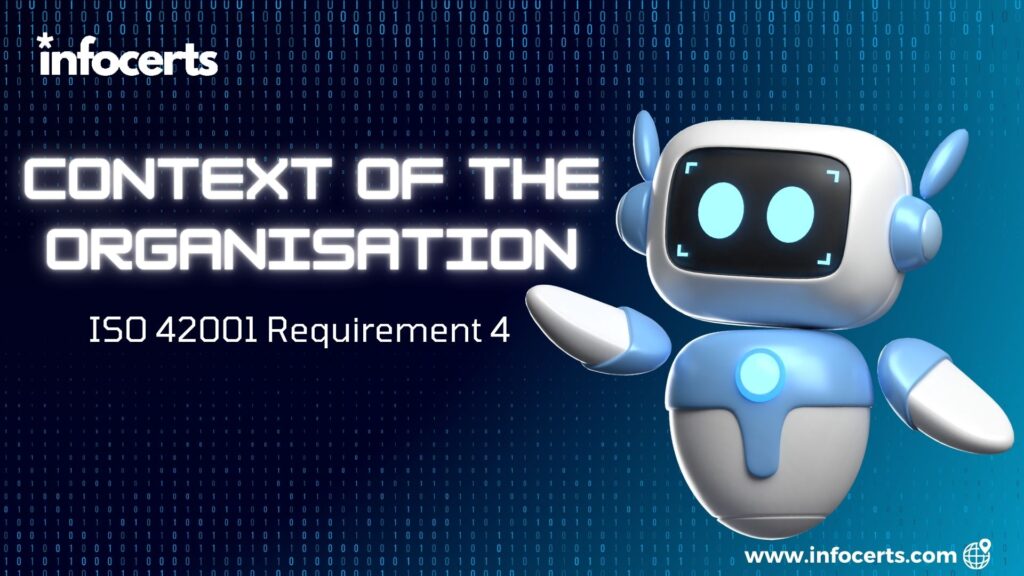Introduction:
ISO 42001 is a crucial standard for organizations aiming to establish an effective energy management system (EnMS). Among its requirements, Requirement 4 focuses on understanding the context of the organization. This is foundational for developing a successful EnMS, as it enables organizations to identify internal and external factors that may impact their energy performance. Let’s delve into Requirement 4 and explore its significance, implementation strategies, and auditing techniques.
Understanding Requirement 4:
Requirement 4 of ISO 42001 necessitates organizations to determine the internal and external issues relevant to their purpose and strategic direction. This involves analyzing various factors such as organizational culture, stakeholders’ expectations, regulatory requirements, and market trends. By comprehensively understanding these factors, organizations can align their energy management efforts with their overall objectives and ensure continual improvement.
Implementation Strategies:
Implementing Requirement 4 involves a systematic approach to gather, analyze, and document relevant information. Here’s a step-by-step guide:
1. Identify stakeholders: Compile a list of stakeholders including employees, customers, suppliers, regulators, and community members.
2. Conduct a SWOT analysis: Evaluate the organization’s strengths, weaknesses, opportunities, and threats related to energy management.
3. Assess regulatory requirements: Determine applicable laws, regulations, and standards related to energy use and environmental impact.
4. Analyze market trends: Stay abreast of market developments, technological advancements, and consumer preferences influencing energy consumption.
5. Document findings: Record all relevant information in a format easily accessible to relevant personnel.
Auditing Techniques:
Auditing Requirement 4 involves verifying that the organization has effectively identified and understood its context. Auditors may employ various techniques such as document review, interviews with key personnel, and observation of organizational processes. Additionally, auditors may compare the organization’s understanding of its context with industry benchmarks and best practices.
Example:
Consider a manufacturing company aiming to implement ISO 42001. Through Requirement 4, the organization identifies increasing energy costs, stringent environmental regulations, and customer demand for sustainable products as key external factors. Internally, outdated machinery and lack of employee awareness about energy conservation emerge as significant issues. Armed with this understanding, the company develops strategies to upgrade equipment, implement energy-saving measures, and enhance employee training.
Conclusion:
Requirement 4 of ISO 42001 underscores the importance of understanding the context of the organization in achieving effective energy management. By meticulously analyzing internal and external factors, organizations can align their EnMS with strategic objectives, mitigate risks, and seize opportunities for improvement. Through robust implementation and auditing techniques, organizations can ensure compliance with ISO standards and drive continual energy performance enhancements.
FaQs:
- What are some auditing techniques for Requirement 4 of ISO 42001?
- How can organizations implement Requirement 4 of ISO 42001?
- Why is understanding the context of the organization important in ISO 42001?
- What is Requirement 4 of ISO 42001?
- What are the benefits of complying with ISO 42001 Requirement 4?
——————————————————————————————————————–
Infocerts, 5B 306 Riverside Greens, Panvel, Raigad 410206 Maharashtra, India
Contact us – https://www.infocerts.com

